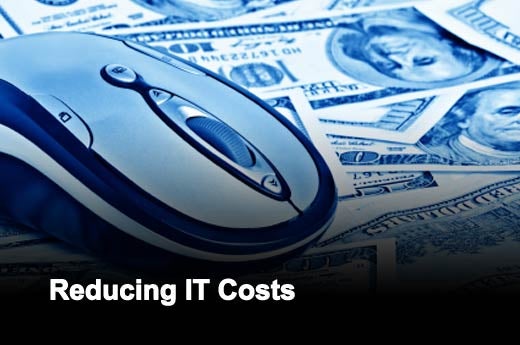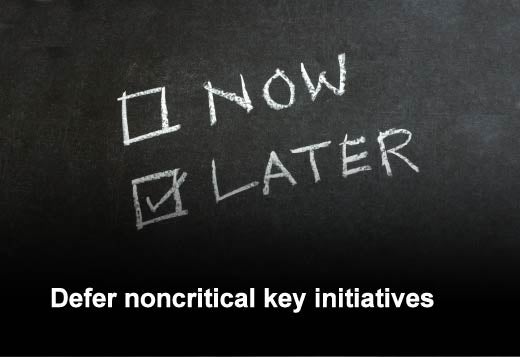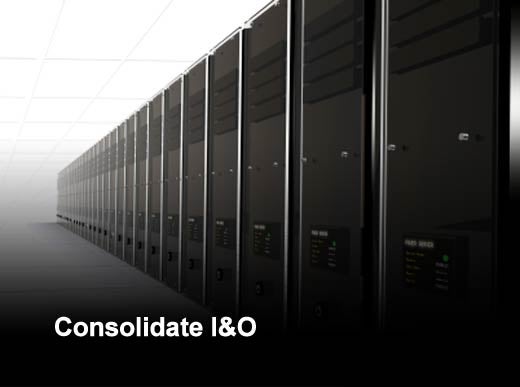As many IT organizations are under intense pressure to continue to implement cost-cutting initiatives, Gartner Inc. has identified 10 actions that can reduce IT infrastructure and operations (I&O) expenses by 10 percent in 12 months, and as much as 25 percent in three years.
“I&O represents approximately 60 percent of total IT spending worldwide, so with IT budgets remaining tight, it’s no wonder that I&O cost-cutting pressure continues to be intense,” said Jay Pultz, vice president and distinguished analyst at Gartner. “When it comes to I&O cost reduction, there is no ‘magic bullet,’ but best results can be achieved by implementing as fully as possible the 10 key cost reductions we have identified.”
Gartner analysts said that due to priority conflicts and resource constraints, few I&O leaders said they have implemented 50 percent or more of the total cost reduction opportunities these 10 key actions offer. However, depending on where an organization is now, fully implementing these 10 cost-cutting suggestions can provide significant savings.
Gartner Inc. has identified 10 actions that can reduce IT infrastructure and operations (I&O) expenses by 10 percent in 12 months, and as much as 25 percent in three years.
I&O leaders need to re-examine their key initiatives to determine which ones to focus on as near-term priorities. In doing so, there are three major questions to ask:
- Does the I&O key initiative strongly support a high-priority business initiative that needs to be completed in the near term?
- Does the I&O key initiative lower the I&O cost structure in the time frame required?
- Does the I&O key initiative lower risk by upgrading I&O to prevent major outages or severe performance deterioration?
When it comes to I&O spending, the data center and the network claim the lion’s share of costs. Because nearly half of the network expenses go to telecom service providers (TSPs), network managers need to continue to renegotiate contracts with these vendors to ensure that their contracted rates are market-based. Substantial steps can also be taken to optimize network costs by refining the design and sourcing of their networks.
I&O consolidation is closely related to standardization, integration and virtualization. In the past, the rise of distributed computing and other trends drove the decline of large data processing sites. Now, however, data centers are rising in importance, and Gartner expects this trend to continue throughout this decade, as server rationalization, hardware growth and cost containment drive the consolidation of enterprise data processing sites into larger data centers.
Servers run at very low average utilization levels (less than 15 percent). Virtualization software increases utilization typically by fourfold or more, which means for a given workload that can be virtualized, a company can typically reduce the number of physical servers by fourfold. Conservatively, this means hardware and energy costs are each reduced by more than 50 percent. As with consolidation, virtualization can be applied to many I&O platforms: Unix servers, storage, networking and client computing.
In the past, newly built data centers often opened with huge areas of pristine white floor space, fully powered and backed up by an uninterruptible power supply (UPS), water- and air-cooled, and mostly empty. With the cost of mechanical and electrical equipment, as well as the price of power, this model no longer works. New design approaches can result in data centers that utilize significantly less power, take up less space and cost much less.
Compute, networking and storage capacity are all growing at annual double-digit rates, with storage growing the fastest by far. Gartner predicts that, by 2016, enterprises will install 850 percent more terabytes than they have installed in 2011. Throwing terabytes at the problem is no longer a viable solution. With capacity growth far outstripping cost declines, tighter control is required. Multiple approaches need to be adopted — including the use of storage virtualization, automated tiering and storage resource management (SRM) tools.
Support for end users and the enterprise typically is about eight percent of total IT spending, and most I&O organizations have at least four tiers of support, each with a different cost point and level of expertise. To reduce costs, organizations need to drive those support calls down to the lowest tier that can satisfactorily resolve users’ issues.
I&O accounts for approximately 50 percent of the total enterprise IT head count, and most of the I&O staff is involved in operational processes of a day-to-day and tactical nature. To contain head count and associated costs, these processes need to be streamlined and as efficient as possible. This typically entails implementing ITIL, the de facto standard framework in IT operations. The principal goal is to improve service management and quality, but ITIL has been known to reduce operating expenses as well.
IT asset management (ITAM) by itself doesn’t reduce I&O costs; however, it is a very effective tool to identify and assess cost reduction opportunities. ITAM can help determine the life of certain assets, defer upgrades and eliminate or combine software licenses, as well as replace certain maintenance service contracts with a time-and-materials approach. IT asset repositories are generally the most effective tools to help in this endeavor. These tools can maintain dates, manage changes to assets and send out reminder emails to ensure that the lifecycle process is proactively managed.
Sourcing is perhaps the most strategic decision facing I&O leaders today. The decision is not as simple as whether to outsource or insource all of I&O. IT leaders can make separate sourcing decisions for virtually any I&O component, system or function. The key decision criteria are controlling those aspects that are of strategic and critical importance to the business, playing to the strength of available staff, defining clear lines of demarcation, keeping the number of vendors involved to a small, manageable number and determining what makes solid financial sense.













